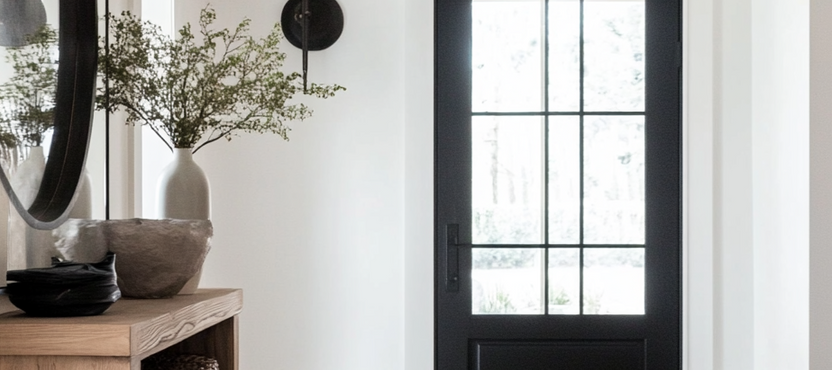Combine Different Design Styles: A Complete Guide to Mixing and Matching Your Home Decor
- Beril Yilmaz

- Jan 3
- 5 min read
Transforming your living space to reflect your unique personality can be exciting. Combining different design styles allows you to express yourself through colors, textures, and patterns. Imagine taking the cozy charm of rustic decor and blending it with the sleek lines of modern aesthetics. When done correctly, mixing styles can lead to stunning results that feel both fresh and inviting.
Navigating through various design elements is like walking a tightrope, balancing chaos and harmony. Understanding the foundational principles of design is crucial for a seamless blend. From colors to patterns and furniture styles, each element can significantly shape your design narrative.
In this guide, we’ll reveal practical tips and inspiring ideas to help you confidently embark on your decorating adventure. Get ready to dive into the exciting possibilities of design!
1. Combine Different Design Styles: Know Your Base Styles

To effectively combine design styles, start by familiarizing yourself with the primary genres of interior design. Here are five core styles that will help you create a strong foundation:
Traditional: Emphasizes classic elements with elegance. Expect rich colors, intricate patterns, and textures. For example, a room featuring a plush velvet sofa paired with a wooden coffee table can evoke warmth and familiarity.
Contemporary: Features crisp lines and neutral palettes. It embraces current trends, often using minimalist decor. A contemporary living space might include a sleek sectional sofa with a glass coffee table, maximizing function without clutter.
Industrial: Draws inspiration from urban settings, showcasing materials like metal, wood, and concrete. Picture an industrial loft with exposed brick walls, complemented by contemporary metal light fixtures.
Bohemian: Celebrates individuality through layering colors and patterns. Think an eclectic mix of vintage textiles and vibrant decor, like a colorful tapestry paired with rustic wooden furniture, creating a relaxed and inviting vibe.
Scandinavian: Focuses on functionality and simplicity. It embraces muted colors and minimalist furniture. Imagine light wood furniture accented with greenery, creating a peaceful, airy environment perfect for relaxation.
Understanding these foundational styles is essential. They help you identify how various elements can blend harmoniously in your space.
2. Combine Different Design Styles: Establish Your Color Palette

One of the most exciting aspects of mixing styles is creating a cohesive color palette. A carefully chosen color scheme acts as a unifying force in your decor. Here’s how to establish a successful palette:
Choose a Dominant Color: This should be present in larger items, such as furniture or walls. For instance, if you opt for navy blue as your dominant color, a navy sofa can set the tone for the rest of the room.
Select Complementary Colors: Add two or three colors that work well with your dominant hue. Imagine incorporating mustard yellow throw pillows and a few rusty orange accents, which can brighten and energize the space.
Experiment with Textures: Introduce a variety of textures without overwhelming the space. Consider pairing a smooth leather sofa with a chunky knitted blanket and a soft faux fur rug.
When selecting your palette, think about the mood you want to create. Lighter shades exude calmness, while vibrant hues can inject excitement into the room.
3. Combine Different Design Styles: Balance Patterns and Textures

Patterns and textures can enhance the blend of design styles. Here’s how to master the art of mixing them effectively:
Start with a Focal Point: Identify an item, like a bold patterned rug or an eye-catching piece of artwork, to inspire your color and pattern choices throughout the space. This item will be the starting point for your overall design theme.
Vary the Scale of Patterns: When combining patterns, pay attention to their size. A large floral print on your sofa can be complemented by smaller polka dot cushions, creating visual interest without clashing.
Incorporate Multiple Textures: Mixing textures adds depth. For example, a smooth leather chair paired with a rustic wooden coffee table can create a cozy and inviting atmosphere.
Take a step back to assess your overall balance. Ensure every element enhances the room without competing for attention.
4. Combine Different Design Styles: Furniture Selection and Arrangement

Your furniture choices significantly affect the outcome of your design mix. Here are some essential tips for selecting and arranging your furniture:
Mix Styles Intentionally: Use pieces from different styles that complement each other. A vintage farmhouse table can pair beautifully with contemporary metal chairs, creating an intriguing contrast.
Consider Scale: Choose furniture that fits the space well. A large sectional sofa can overwhelm a small room, while smaller pieces might get lost in a vast area.
Create Distinct Zones: In an open floor plan, use furniture to define areas. For example, a vibrant bohemian lounge can flow into a sleek modern dining space, enhancing functionality without losing style.
Ensure your arrangement invites conversation and allows easy movement while maintaining aesthetic cohesion.
5. Combine Different Design Styles: Accessorizing for Impact

Accessories provide the finishing touches that tie various design styles together. Here’s how to make intentional choices with accessories:
Layered Lighting: Invest in diverse light sources. A glass modern floor lamp alongside vintage-style pendant lights can create visual layers that enhance the room’s appeal.
Art and Decor: Choose art pieces that represent various styles but share a common theme or color palette. A framed abstract painting in earth tones can complement rustic wooden furniture.
Incorporate Plants: Adding greenery can bring a refreshing touch to your decor. Use a mix of ceramic pots, hanging planters, and metal stands to introduce varying textures and forms.
Let accessories breathe life into your space; they can add personality and adapt to changing trends or your evolving tastes.
6. Combine Different Design Styles: Embrace the Unexpected

Be bold and embrace unexpected pairings. Mixing unusual styles can create captivating environments that showcase your individuality. Here’s how:
Use Unconventional Decor: Unique items, like a quirky sculpture or a bold piece of artwork, can electrify a space and spark conversations among guests.
Celebrate Cultural Inspirations: Integrate diverse cultural elements for a globally-inspired aesthetic. Consider adding Moroccan lanterns or Asian textiles alongside contemporary furniture.
Break the Rules: Feel free to bend traditional design guidelines. Pairing a vintage armchair with a sleek modern side table can create a striking contrast that feels fresh and fun.
Trust your instincts when experimenting with unexpected combinations. The outcome can often surprise you, leading to a space that feels both chic and personal!
7. Combine Different Design Styles: A Cohesive Story

As you venture into mixing styles, remember that your home should tell a cohesive story. Here are final tips to consider:
Respect Existing Elements: If you're updating a space, consider its existing architecture and color schemes. For example, a mid-century modern home may benefit from contemporary furnishings that align with its character.
Reflect Your Personality: Your decor should represent your interests and experiences. Combining styles allows you to share your story with visitors.
Iterate and Evolve: Design is dynamic. Remain open to reassessing how your styles blend and evolve, allowing for change and growth in your space over time.
FAQs
Q: Can I combine very different styles?
Yes! Choose elements that complement each other, focusing on colors, patterns, and textures to create harmony.
Q: How can I avoid a chaotic look?
Start with a cohesive color palette and maintain balance within patterns and textures. Focus on a dominant style and accessorize thoughtfully.
Q: How do I know when my space looks right?
Trust your instincts. If it feels inviting and reflects your personality, it's likely well-balanced.
Q: Is there a guideline for furniture selection?
Definitely! Intentionally mix styles while ensuring each piece is appropriately scaled for your space and complements the others.
Final Thoughts
Combining different design styles unlocks a realm of creativity, allowing you to curate a unique and personal living space. With an understanding of foundational styles and careful attention to colors, patterns, and furniture arrangements, you can transform your home into a beautifully cohesive environment.
Remember, your home reflects your journey—each piece shares a part of your story. So, contact us, have fun, take some risks, and let your style shine!


































